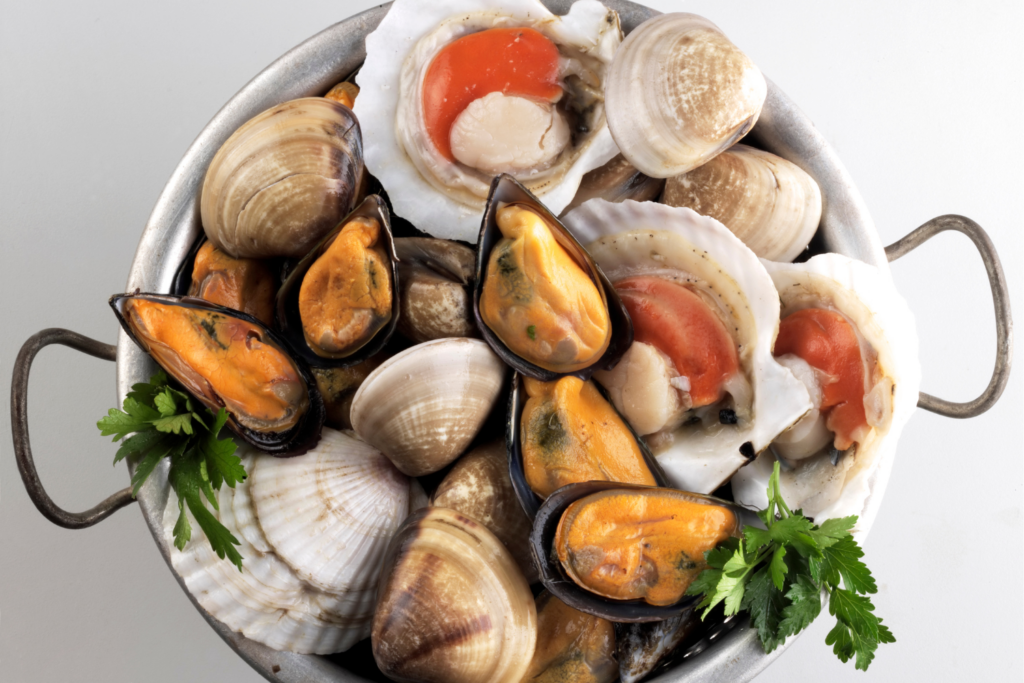Food of the Month – Shellfish

Shellfish is a colloquial and fisheries term for exoskeleton-bearing aquatic invertebrates used as food, including various species of mollusks, crustaceans and echinoderms. Common crustaceans that people eat include crab, lobster and shrimp while common mollusks are clams, mussels and scallops.
Storage Tips:
- Shellfish, such as mussels, clams and oysters that are purchased live in their shells, should be put in a shallow pan (no water), covered with moistened paper towels and refrigerated.
- Never store shellfish in water.
- Mussels and clams should be used within 2-3 days and oysters within 7-10 days.
- Shellfish taken from the freezer and thawed in a refrigerator should keep for up to two days. Once thawed, do not refreeze.
- Cooked shellfish should keep in the refrigerator for up to two days and in a freezer up to three months
Nutrition: Shellfish are low in calories and high in lean protein and healthy fats and many experts agree that a balanced diet should contain two servings of fish per week. One of the biggest benefits to seafood is the number of vitamins and minerals that are in each serving such as vitamins E, B6, B12, magnesium, iron and zinc.
Cooking: For proper food safety, shellfish must be cooked to an internal temperature of 145 degrees Fahrenheit. However it is often impractical to use a food thermometer to check the temperature of cooked shellfish. You can use the following tips to cook shellfish safely:
- Shucked shellfish (clams, mussels and oysters without shells) become plump and opaque when cooked thoroughly.
- Clams, mussels and oysters in the shell will open when cooked.
- Scallops turn milky white or opaque, and firm. Depending on size, scallops take 3 to 4 minutes to cook thoroughly.
- Shrimp turn pink and firm. Depending on the size, it takes from 3 to 5 minutes to boil or steam 1 pound of medium size shrimp in the shell.
Fun Facts:
- Around 2% of people in the U.S. have shellfish allergies.
- Clams can live for up to 35 years.
- Humans eat about two billion pounds of oysters every year.
